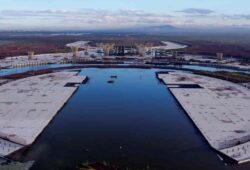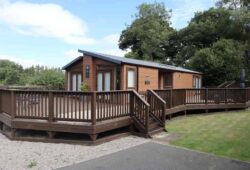Many of you wonder – can you burn wet wood?
Perhaps the weather has been crazy lately, and you’ve seen plenty of rain. Now, you want to stay warm by making yourself a campfire.
Unfortunately, the only things that you can find are wet wood. Or at least a little bit moist.
Is it possible to burn this type of wood? Or will it be useless to even try to do so?
If you are wondering about the safety or the possibility of being able to burn wet wood, keep reading. We share with you the things you can do to keep your fire going if you have nothing but wet wood around.
Contents
Wet Wood for Your Campfire?
Nothing beats the soothing experience that a campfire or bonfire offers.
When out camping, it is absolutely wonderful to stay warm and cozy while huddling around this natural source of heat.
Naturally, you would choose dry wood to use in making your own campfire. But with nature’s unpredictability, you may find moist wood at your camp spot.
In this case, you wonder if you can still burn and use these.
The truth is that wet wood varies. There is wet wood that only appears to be moist on the outside. However, on the inside, it is still nice and dry. On the other hand, there is wet wood that is soaked completely – inside and out.
So, if you are not sure what to do, then it helps to choose dry wood that will sure to help you keep that fire going for hours.
Can You Burn Wet Wood?
You would think that wet wood won’t burn.
After all, it’s wet, so how can you even light it up… Right?
Well, not in all cases, actually. In fact, there are cases when you can burn wet wood. It happens when you have sat on it for a while, or it’s been near a campfire or under the sun for some time.
This way, wood can be dry enough to let it combust. This is why it makes perfect sense to speed up the drying process than to try to light up soggy, wet wood.
You should be able to easily burn moist wood after starting the fire. At this point, the wood should be able to sustain the heat – at least for up to 15 minutes.
If you have dry tinder, then it should suffice in sustaining the fire. And this makes it relatively simple to burn wet wood.
But this is not the case when you have very wet wood. It should be quite tricky to let it dry and let it combust.
So, you need to be able to choose your firewood well. This is particularly true when you are in a moist and wet environment.
Read More: Practical Guide on How To Connect Two Tents Together
Factors that Affect the Wood’s Burnability

Now, let us discuss what exactly causes wood to burn faster and more efficiently.
For instance, you are out choosing wood for your campfire. Here are some factors to keep in mind to make sure the wood you find is good enough:
- The amount of moisture absorbed by the wood
- The level of wetness of the wood
- Water exposure level
- Being submerged or merely sprinkled with water
- The thickness of the firewood
- Type of wood
- Wood’s condition
As you can see, it is not very simple to select wood. Or to even consider wet wood as being unable to burn just because it is wet, moist, or drenched in water.
You also need to think about how much water it held and for how long.
The depth and length of time moisture have gotten into the wood determines its wetness and ability to burn.
Some wood may simply get wet for just a few minutes. This is the case when it rained or drizzled, and the wood was slightly impacted by this natural occurrence. In this case, you should still be able to burn it.
However, it is not the case with wood that sustained a rainstorm. It will take longer for it to dry. Moreover, it will not easily burn.
As for the thickness of your wood, this feature also matters. The thicker the wood, the harder it will be to dry it. Moisture may stay for several hours, which can make it tough to dry.
If you have two pieces of wood, try cutting it at a foot’s length. Let us say that one wood is an inch in diameter while the other is 8 inches thick. In case both are well-soaked in water, the larger and thicker one will dry slower.
It is only logical.
This is why you can choose smaller wood that may be slightly wet instead of thicker and longer ones that are just as wet.
The former should be able to dry faster than the other.
Old wood that’s dried out, yet infested by termites, tends to be more of a sponge. This is why it should hold water more. On the contrary, wood that’s been cut just the past year is denser. If these types of wood are both wet, the more recently cut and dense wood will dry slower. This is because of its thickness.
Here is a helpful video on how to make sure your firewood is ready to use:
Conclusion
Depending on the type of wood and how wet it is, it may or may not burn.
In some cases, wet wood may still burn, although it can take time. And yet in other instances, you will have to first dry it out before you light it up.
This is why it is important to know how to examine wood before you burn it. We have listed the different factors to consider when trying to burn wet wood. Thus, you should know how to get your fire going and make sure you stay warm for hours.




